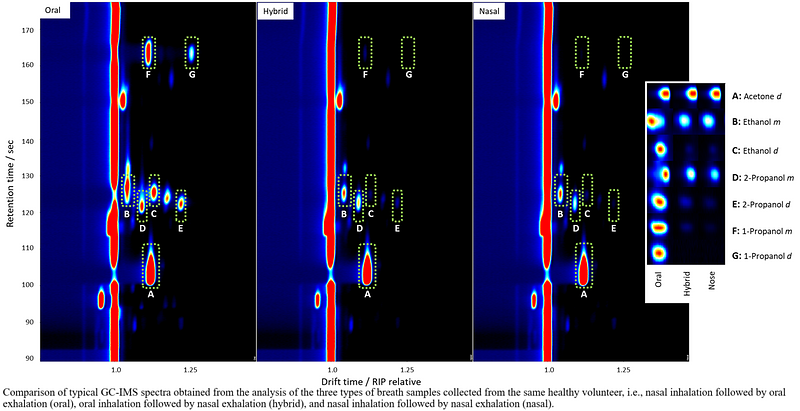The oral microbiome and its effect on exhaled breath volatile analysis - the elephant in the room

The oral microbiome and its effect on exhaled breath volatile analysis - the elephant in the room
Petralia, L. S.; Chawaguta, A.; Ruzsanyi, V.; Mayhew, C. A.; Sanders, D.
AbstractThe rapid transfer of volatiles from alveolar blood into the lungs and then out of the body in exhaled breath leads to the common and natural conclusion that these volatiles provide information on health and metabolic processes, with considerable potential as biomarkers for use in the screening, diagnosis and monitoring of diseases. Whilst these exhaled volatiles could well serve as biomarkers for human metabolic processes, thereby providing insights into the clinical and nutritional status of individuals, there exist various confounding factors that limit their easy application. A major confounding factor is the introduction of microbially produced oral volatiles into the exhaled breath, yet these volatiles are often ignored in discovery volatile research studies. Here, we provide a comparative cross-sectional study of selected volatiles commonly found in exhaled breath, namely 1-propanol, 2-propanol, ethanol, acetoin, acetone, isoprene, methanol and 2-pentanone, measured in nasal and oral end-tidal exhaled breath samples for twenty-one volunteers, using the analytical technique of gas chromatography ion mobility spectrometry. Significant differences in 1-propanol, 2-propanol, ethanol and acetoin concentrations are found between breath samples exhaled via the mouth and those exhaled via the nose, serving to illustrate the extent to which the oral microbiome can influence volatile concentrations in breath. A central finding is that the nasally sampled volatiles are little influenced by the inhalation route (oral or nasal). The evidence is clear that in order to reduce the influence of the oral microbiome on untargeted discovery breath research studies, end-tidal exhaled nasal breath samples should be taken for endogenous volatile analysis, otherwise oral microbial volatiles could be falsely identified as biomarkers. This is particularly important given the rise in the use of machine learning algorithms and artificial intelligence to identify variations in volatilomes. The development and commercialisation of simple, user-friendly and comfortable end-tidal exhaled nasal sample collection devices are required for nasal sampling to become widely adopted.